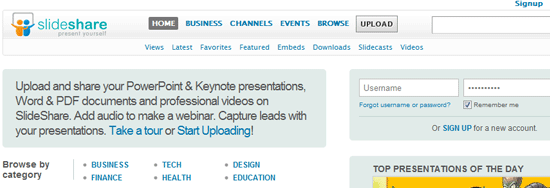The Advantages of Placing Content in Different Channels
We've all heard the old adage 'never put all of your eggs in one basket,' and when it comes to developing an online presence for yourself or your brand this saying could not fit more perfectly.
While it's great to develop a strong and comprehensive website to serve as a hub of information, it's just as important to develop a presence in different channels so that your brand can reach as many people as possible. And while almost every brand has a Facebook and Twitter account, many fail to take advantage of other media-specific channels such as YouTube, Flickr and Slideshare.
The great thing about utilizing such websites is that you are placing your name and multimedia in front of an audience of people who are already looking for it. Users will be able to find you in the type of medium they want instead of having to sift through general search results. These websites also make it incredibly easy to redirect traffic to your individual site, creating an easy way to garner a new variety of interested visitors.
The Facts
- People are watching 2 billion videos a day on YouTube and uploading hundreds of thousands of videos daily.
- The user base is broad in age range, 18-55, evenly divided between males and females, and spanning all geographies.
- Fifty-one percent of users go to YouTube weekly or more often; 52 percent of 18-34 year-olds share videos often with friends and colleagues.
- Flickr hosts more than 4 billion images.
- Flickr allows you to connect with friends and family and allows you to set special viewing privileges.
- Slideshare garners 25 million visitors a month and 70 million monthly pageviews
- Slideshare allows you to share presentations, documents, and pdfs with colleagues and interested users
Building your presence on YouTube
As one of the most visited sites on the Internet, YouTube is a place with unbridled opportunity. By placing your videos on the site, you’re sharing your brand and message with people who will actively seek it out. When you create your YouTube account, you also create a user page that maintains all of your videos in one central location – making it easy for visitors to view videos in succession.
YouTube also allows for tagging – so that you can list keywords that relate to your video and keywords that your visitors may use when searching for similar content. By optimizing the titles of your videos and the key words and phrases you use in your tags, you’ll be able to reach new visitors through search.

Once you upload your videos to YouTube it’s easy to embed those videos on your website – creating a direct link between YouTube’s services and your website.
Other features of YouTube include:
- Public or private videos: Users can elect to broadcast their videos publicly or share them privately with friends and family upon upload.
- Subscriptions: Users are able to keep track of their favorite users' new videos.
- Record from Webcam: Users with a webcam and Flash software are able to instantly record video responses or normal videos onto the site rather than having to prerecord and then upload the video.
- Separate index on Google: When users upload videos to YouTube, these videos are indexed separately on Google searches displaying as ‘video results’ instead of in the general results.
Building your presence on Flickr
Flickr works similarly to YouTube in that you can easily embed photos on your website that draw from the photos on your Flickr account.
Flickr’s clean and organized layout makes adding and searching for photos easy for users and visitors alike. It also allows you to tag photos so that they can be tied to a certain topic. Flickr also allows you to create sets of photos that display as slideshows – a feature that is particularly useful when showcasing photos from a specific event or time period. By including rich descriptions such as titles, tags, location, and people, you give your images context and a life of their own.

Flickr also encourages users to comment on each other’s photos, facilitating a sense of community amongst its users. By using Flickr, you’re reaching out to others through a channel that devotes itself to one type of media. Flickr also offers flexible privacy controls making sharing images simple, secure, and comfortable.
Building your presence on SlideShare
Simply put, SlideShare is the best way to get your presentations and documents out there on the web. It’s a place where you can share your ideas and learn from the ideas of others. Users regularly comment, favorite, and download content. And just like Flickr and YouTube, SlideShare offers an easy way to embed their presentations on your website.

Other features of SlideShare include:
- Embed slideshows into your own blog or website.
- Share slideshows publicly or privately. There are several ways to share privately.
- Synch audio to your slides.
- Market your own event on slideshare.
- Join groups to connect with SlideShare members who share your interests.
- Download the original file.
The result of utilizing different channels
By taking advantage of the services that YouTube and Flickr have to offer you’re not only reaching out to followers in a channel that they are familiar and comfortable with but you’re also creating direct links between these services and your main website, drawing traffic and attention to the place you want people to see.




Leave the first comment